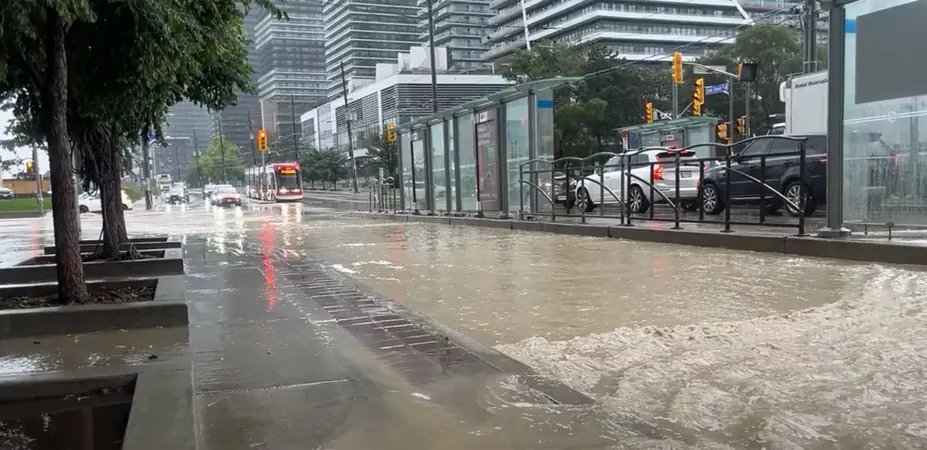
Devastating Flood Exposes Toronto's Climate Vulnerabilities
2025-07-16
Author: Noah
On July 16, 2024, a catastrophic deluge struck Toronto and southern Ontario, causing a staggering $940 million in insured damages. This extreme weather event not only drowned roads and homes but also exposed the city’s glaring vulnerabilities to climate change.
Summer in Canada often comes with unpredictable and severe weather, but the July flood set a new precedent. In just one morning, Pearson International Airport recorded an astonishing 97.8 mm of rain—far exceeding the average July rainfall of 74 mm.
The impact was immediate and widespread. Major waterways, including the Don Valley and Humber rivers, overflowed, flooding public transit hubs like Union Station and forcing road closures throughout the city. At one point, over 165,000 Toronto Hydro customers lost power.
The Insurance Bureau of Canada reported the financial fallout, confirming that damages from this catastrophic event surpassed $940 million.
What Triggered the Flood?
The chaos of July 16 resulted from a confluence of meteorological factors. A powerful weather system loaded with a moisture anomaly moved from the U.S. into southern Ontario, unleashing two rounds of intense rainfall. The convection-driven storm system tracked through major cities such as London, Burlington, Mississauga, and Toronto, creating a 'perfect storm' scenario that wreaked havoc.
Unprecedented amounts of precipitable water—resembling tropical air masses—compounded the rainfall, leading to near-record water saturation. Earlier precipitation, including remnants from Hurricane Beryl, left the ground already sodden, with little capacity to absorb additional rain.
A City Unprepared for Nature's Fury
While climate change plays a significant role in escalating extreme weather events, Toronto's own urban development practices have exacerbated the problem. Decades of urbanization have stripped away essential natural infrastructure such as wetlands and forested areas that can act as natural sponges, absorbing rainfall and reducing flood risks.
Instead, sprawling concrete landscapes dominate the city, trapping water and rendering traditional drainage systems ineffective during heavy rains. With aging infrastructure ill-equipped to handle modern challenges, these floods serve as a wake-up call for city planners and residents alike.
What’s Next for Toronto?
In the aftermath of the flooding, Toronto Mayor Olivia Chow announced a potential remedy: the city discovered $2 billion in its budget aimed at upgrading its aging transit system and infrastructure. However, experts warn that Toronto still faces a $26 billion backlog in necessary repairs, emphasizing the urgent need for comprehensive climate preparedness.
As extreme weather events become increasingly common, the question remains: How will Toronto adapt to safeguard its residents and infrastructure against the next inevitable deluge?









 Brasil (PT)
Brasil (PT)
 Canada (EN)
Canada (EN)
 Chile (ES)
Chile (ES)
 Česko (CS)
Česko (CS)
 대한민국 (KO)
대한민국 (KO)
 España (ES)
España (ES)
 France (FR)
France (FR)
 Hong Kong (EN)
Hong Kong (EN)
 Italia (IT)
Italia (IT)
 日本 (JA)
日本 (JA)
 Magyarország (HU)
Magyarország (HU)
 Norge (NO)
Norge (NO)
 Polska (PL)
Polska (PL)
 Schweiz (DE)
Schweiz (DE)
 Singapore (EN)
Singapore (EN)
 Sverige (SV)
Sverige (SV)
 Suomi (FI)
Suomi (FI)
 Türkiye (TR)
Türkiye (TR)
 الإمارات العربية المتحدة (AR)
الإمارات العربية المتحدة (AR)